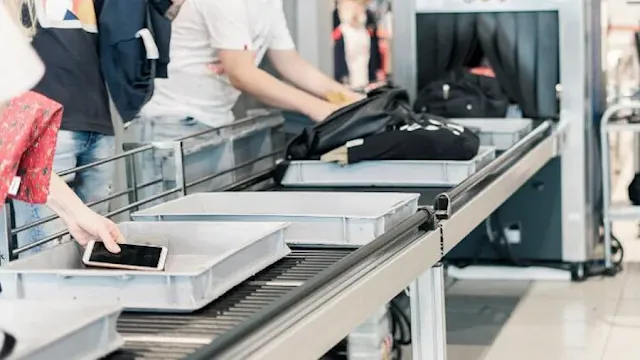Is it legal to carry liquor on Indian domestic flights
Many of us wonder about the limits on carrying alcohol on domestic flights in India, especially when planning our travels. This question gains importance if we know that alcohol prices at our destination are lower than in our hometown.
We understand the confusion you might experience regarding how much alcohol you're allowed to take with you on domestic flights. In this guide, you'll find detailed information about the regulations and guidelines set by both the government and the aviation sector on transporting alcoholic beverages on domestic routes.
With the festive season upon us, many of you might be planning to jet off to your favorite destinations across India. Whether you're looking to celebrate with family or enjoy a quiet getaway, understanding the nuances of carrying alcohol on domestic flights in India is crucial for a smooth and enjoyable journey. Let's dive into the guidelines and tips that will ensure you can bring along your preferred spirits without any hiccups.
Can I Carry Alcohol on a Domestic Flight in India?
Yes, you can, but there are specific rules you need to follow. The ability to carry alcohol in your luggage on domestic flights in India is subject to certain regulations set by both the airlines and the Directorate General of Civil Aviation (DGCA). These rules are in place to ensure the safety and comfort of all passengers. Here’s what you need to know:
Carrying Alcohol in Checked Baggage: You are allowed to carry alcohol in your checked baggage on domestic flights within India. However, the amount is capped at 5 liters per passenger for alcoholic beverages containing between 24% and 70% alcohol by volume (ABV). This limit is inclusive of any alcohol purchases made at duty-free shops.
Packing Requirements: The alcohol must be in retail packaging and properly sealed. To prevent breakage, it’s wise to cushion the bottles securely within your baggage. Some airlines may have additional packaging requirements, so it's always a good idea to check with them before your flight.
Alcohol in Carry-On Luggage: Generally, carrying alcohol in your hand luggage is not permitted due to restrictions on liquids. However, there are exceptions for alcohol purchased at duty-free shops if it's sealed in a tamper-evident bag along with the receipt (not exceeding 1 litre in capacity). Still, it's advisable to store it in your checked luggage to avoid any issues during security checks.
Apart from alcohol, there are general restrictions on carrying liquids in your carry-on baggage. For domestic flights within India, the rule of thumb is that liquids, gels, and aerosols must be in containers with a maximum capacity of 100ml each. These containers should fit comfortably in a transparent, resealable plastic bag, with a total capacity of not more than 1 liter. This rule applies to toiletries and other non-alcoholic beverages as well. Remember, these restrictions do not apply to checked baggage.
Navigating Through Security
When navigating security checkpoints, ensure that any liquids within your carry-on comply with the aforementioned guidelines. Always declare any alcohol in your checked baggage when checking in, as failure to do so may result in delays or confiscation of your items.
Pro Tips for a Smooth Journey
Check Airline Policies: Before you pack, check your airline's specific guidelines on carrying alcohol. Airlines may have varying restrictions, and staying informed will help you avoid any surprises at the airport.
Label Your Baggage: Clearly labeling your checked baggage containing alcohol can be helpful, especially if there are any inspections. This step can expedite checks and ensure your baggage is handled appropriately.
Purchase at Duty-Free: If you're keen on avoiding the hassle of packing alcohol in your checked baggage, consider making your purchase at duty-free shops after security. This way, you can carry it onto the plane without worrying about liquid restrictions.
Stay Informed: Laws and regulations can change, so it's always best to stay updated on the latest guidelines from the DGCA and your airline. A quick check before your trip can save you a lot of trouble.
Wrapping It Up
Traveling with alcohol on domestic flights in India doesn't have to be complicated. By following the guidelines and preparing accordingly, you can ensure that your spirits (literally) fly with you to your destination. Whether you're looking to toast to a special occasion or simply enjoy your favorite drink upon arrival, a little planning goes a long way. Safe travels, and cheers to a fantastic journey ahead!
Major Indian Domestic Airlines
Indigo: Known for its extensive network and high-frequency flights, IndiGo is one of India's largest airlines by passengers carried. It offers affordable travel options across a wide array of domestic destinations.
Air India: The flag carrier of India, Air India has a rich history and offers both domestic and international flights. It's known for its hospitality and serves as a bridge to various Indian cities.
Vistara: A joint venture between Tata Sons and Singapore Airlines, Vistara brings a touch of luxury to domestic air travel. It's appreciated for its customer service and premium experience.
SpiceJet: Focused on budget travel, SpiceJet operates a fleet that serves numerous domestic destinations. It's known for offering competitive pricing without compromising on safety or comfort.
Go First (previously GoAir): Catering to the needs of budget travelers, Go First provides efficient and affordable services across its domestic network. It's recognized for its punctuality and operational efficiency.
AirAsia India: A joint venture between Tata Sons and AirAsia Berhad, AirAsia India is a low-cost carrier that aims to make air travel accessible to everyone. It's known for its vibrant branding and aggressive pricing strategies.
Alliance Air: A regional airline, Alliance Air operates as a subsidiary of Air India, focusing on connecting smaller cities and remote regions with the major hubs of the country.
Regional and Commuter Airlines
In addition to these major carriers, there are several regional and commuter airlines that serve specific parts of the country, enhancing connectivity and fostering regional tourism. Some of these include:
Star Air
TruJet
FlyBig
Navigating the Skies
Each of these airlines offers unique features, from luxury services to budget-friendly options, catering to the diverse needs of travelers. When booking flights, consider factors like baggage allowances, in-flight amenities, and loyalty programs, which can vary significantly between carriers.
The Indian aviation landscape continues to evolve, with airlines expanding their fleets and networks to meet the growing demand for air travel. Whether you're flying for business or leisure, there's never been a better time to explore the beauty and diversity of India by air. Safe travels!










